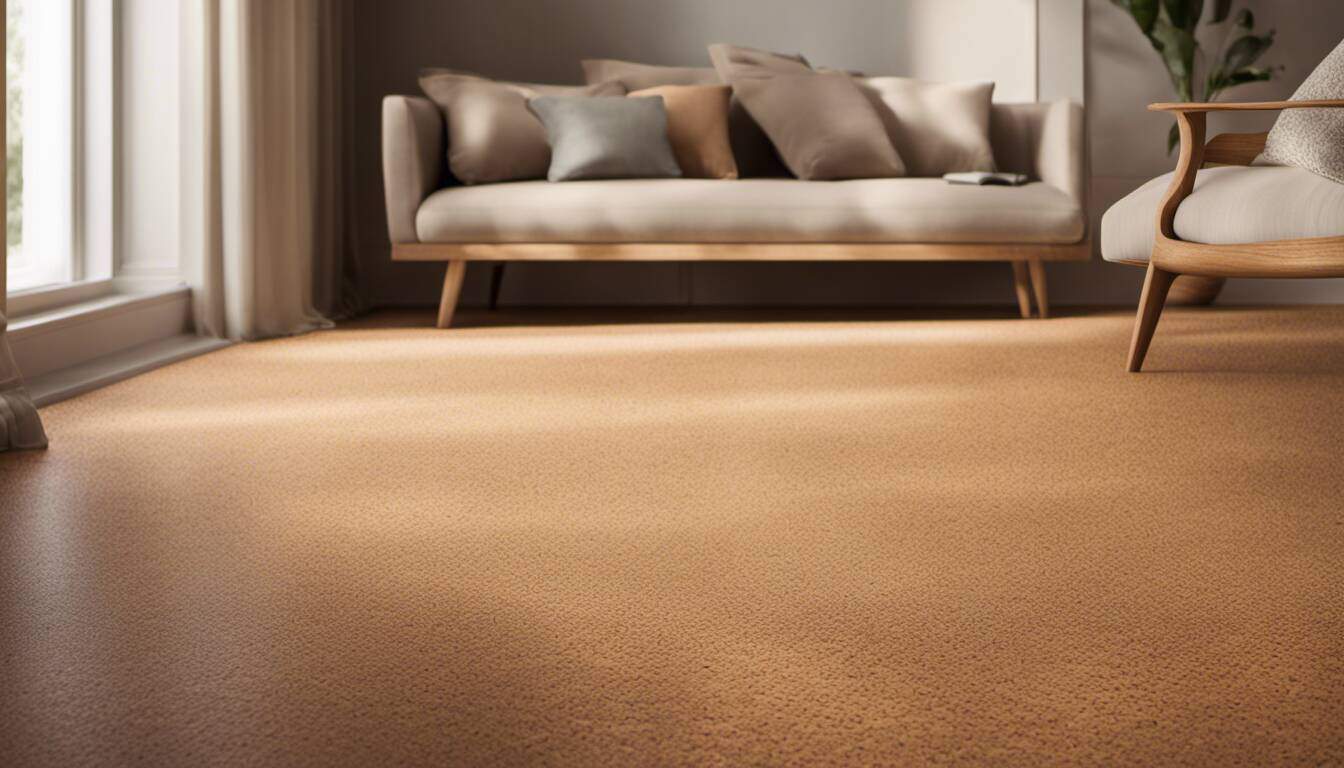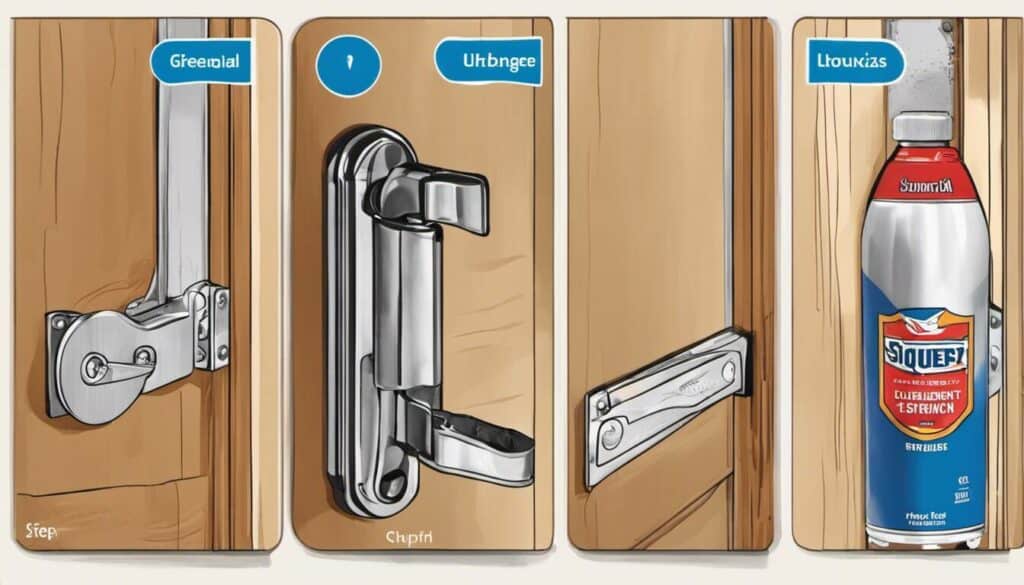It all began with a desire to revamp my living space, to infuse it with warmth and character while also embracing eco-friendly alternatives. As I was exploring various flooring options, I stumbled upon cork in a magazine—a material I had never considered before. Upon further research I found that cork floors offered a blend of comfort, durability, and style. From its natural insulation properties to its soft underfoot feel, every aspect of this material seemed perfectly aligned with my vision for a cozy and sustainable home. So buckle up as I walk through my findings and explain why I would recommend this material for floors.
Cork floors have several appealing attributes, including their unique and natural appearance, durability, comfort underfoot, eco-friendliness, and noise-cancelling properties. They are also low-maintenance and easy to clean, making them an excellent choice for busy households. Overall, cork is a great choice for those seeking a stylish, sustainable, and practical flooring option.
“Cork floors offer a multitude of advantages that often go unnoticed. Firstly, they are derived from a renewable source – the Cork Oak tree, which makes them one of the most eco-friendly options. In terms of comfort, cork possesses a natural resilience, providing a cushioned surface that is gentle on your feet, perfect for areas with high foot traffic. It also has excellent thermal and acoustic insulation properties, reducing ambient noise and helping maintain a favorable indoor temperature. But aside from these, one of the most delightful qualities of cork is its unique aesthetic appeal, adding a touch of warmth and character to any interior. When deciding between different hardwood floors, cork stands out as a distinctive and attractive option.”
Thaddeus Lawrence, Flooring Consultant & Eco-Sustainability Expert
The Allure of Cork Surfaces
Cork floors have an undeniable allure that sets them apart from other flooring options. It’s not just their natural beauty and unique texture that captivate homeowners, but also the multitude of benefits they offer. From their eco-friendliness to their comfort underfoot, cork surfaces have become increasingly popular in recent years. Let’s explore what makes them so alluring.
One of the most appealing aspects of cork floors is their environmental sustainability. Unlike hardwood flooring, which involves cutting down trees, cork is harvested from the bark of the cork oak tree without causing any harm to the tree itself. This renewable harvesting process makes it an eco-friendly choice for those concerned about reducing their carbon footprint.
Another alluring feature of cork surfaces is their exceptional insulation properties. Cork acts as a natural thermal insulator, helping to keep your home warm in colder months and cool during the summer. This can lead to energy savings and reduced heating or cooling costs, making cork flooring not only aesthetically pleasing but also cost-effective in the long run.
The texture and comfort offered by cork floors add another layer of appeal. The cellular structure of cork creates a soft and cushioned surface that is gentle underfoot, making it ideal for homes with young children or individuals who prefer a more comfortable walking experience. Additionally, the natural elasticity of cork allows it to compress under weight, which gives it a forgiving quality when objects are dropped on its surface. This durability contributes to the long-lasting nature of cork floors, making them a wise investment for your home.
For example, imagine stepping onto a cold tile floor in bare feet during winter; now imagine stepping onto a warm and soft cork floor in the same scenario – quite a difference, right? Cork is like nature’s carpet, providing warmth and comfort that truly steals hearts.
Now that we’ve explored the allure of cork surfaces, let’s dive deeper into my personal infatuation with them.
Unpacking My Infatuation
Like many homeowners, I was searching for a flooring option that would not only enhance the aesthetics of my home but also provide practical benefits. That’s when I discovered cork floors, and it was love at first sight. The more I researched and learned about cork flooring, the more infatuated I became with its numerous advantages.
Growing up in a house with hardwood floors, I always admired their timeless beauty and elegance. However, I also witnessed the challenges of maintaining and caring for them. From dents and scratches caused by furniture to concerns about water damage, hardwood floors required constant attention and upkeep.
But with cork floors, I found a solution that combines both natural beauty and practicality. The unique patterns and textures of cork lend a distinct character to any space, adding warmth and charm to my home. And unlike hardwood, cork is resistant to dents, making it more durable and forgiving in high-traffic areas or homes with pets.
Now some may argue that the initial cost of cork flooring can be higher compared to other options. While this may be true to some extent, I firmly believe that the long-term benefits outweigh the upfront investment. The durability and longevity of cork floors mean fewer replacements or repairs over time, saving both money and hassle in the long run.
As someone who values sustainability and eco-conscious choices, cork’s environmental friendliness sealed the deal for me.
- A survey conducted in 2021 found that cork floorings are chosen by about 15% of homeowners, with the primary reasons being its eco-friendliness and comfort underfoot.
- According to a study by the National Wood Flooring Association (NWFA), cork is among the top 5 most popular wood flooring materials used in homes due to its insulating properties and sustainability.
- A research study published in The Journal of Cleaner Production demonstrated that cork floors have a lower environmental impact over their life cycle compared to other flooring options due to their long lifespan, renewable sources, and low energy consumption during production.
The Many Advantages
Cork floors have become a popular choice for homeowners and interior designers alike due to their multitude of advantages. Not only are they visually appealing, but they also offer unique qualities that set them apart from other types of flooring materials. Let’s explore some of the many benefits of cork floors.
One major advantage of cork floors is their exceptional insulation properties. Due to their cellular structure, cork acts as a natural insulator, helping to keep your home warm during the winter and cool during the summer. This can lead to significant energy savings and a more comfortable living environment for you and your family.
Imagine stepping barefoot on a cold morning onto a traditional tile floor where every step sends shivers up your spine. Contrast that with the warmth and comfort that cork floors provide. You’ll enjoy walking around your home without worrying about chilly feet or reaching for fuzzy slippers.
In addition to insulation, another remarkable quality of cork flooring is its sound absorption capabilities. Whether it’s the pitter-patter of little feet or the clinking of dishes, cork helps minimize noise and provides a peaceful atmosphere in your home.
Picture this: it’s family movie night, and you’re all gathered in the living room enjoying your favorite film. With cork flooring, you won’t have to worry about disrupting neighbors below or disturbing family members in adjacent rooms. The tranquility brought by cork floors allows everyone to fully immerse themselves in the movie-watching experience.
Aside from insulation and sound absorption, there are various other advantages that make cork floors an attractive option for homeowners. One significant aspect worth exploring is the eco-friendliness of using cork as a flooring material.
Eco-friendliness
If you’re someone who values sustainable choices, then cork flooring might steal your heart even further. Cork comes from the bark of the cork oak tree, which doesn’t require cutting down the entire tree. Instead, the bark is carefully harvested every nine years, allowing the tree to continue growing and absorbing carbon dioxide from the atmosphere. This sustainable harvesting process makes cork floors an environmentally friendly choice.
Think of it as giving a tree a fashionable makeover. The cork oak tree gets to keep thriving and gracing us with its presence while we repurpose its bark into stunning and eco-friendly flooring.
Not only does this sustainable harvesting method preserve trees, but it also helps to promote biodiversity in cork oak forests. These forests provide habitats for various plant and animal species, contributing to the overall health of our planet.
It’s important to note that not all cork flooring options are created equal when it comes to eco-friendliness. Look for reputable brands that practice responsible sourcing and manufacturing processes. By choosing high-quality cork floors with eco-friendly certifications, you can ensure that your decision aligns with your commitment to a greener lifestyle.
Insulation and Sound Absorption Qualities
One of the most remarkable benefits of cork floors is their exceptional insulation and sound absorption qualities. When it comes to insulation, cork acts as a natural barrier against both heat loss and cold penetration. This means that in colder climates, your cork floors will help retain warmth, creating a cozy and comfortable environment. On the other hand, in warmer weather, cork insulates against heat, helping to keep your space cool. So no matter the climate you’re in, cork flooring can help regulate the temperature of your home, allowing for energy efficiency and potentially reducing heating or cooling costs.
Additionally, cork is an excellent material for sound absorption. The structure of cork is comprised of millions of air-filled cells that act as cushions, absorbing sound waves and preventing them from echoing or bouncing off hard surfaces. This makes cork flooring an ideal choice if you want to reduce noise transmission between floors or rooms. Not only does this create a quieter interior environment, but it also ensures privacy within your living spaces.
Understanding Cork Installation
When considering cork flooring for your home, understanding the installation process is important to achieve a successful outcome. While the installation of cork flooring is generally straightforward and can be done as a DIY project for those with some handy skills, it’s crucial to have a clear understanding before embarking on the installation process.
Before starting installation, it’s essential to prepare the subfloor properly. The subfloor should be clean, dry, level, and free from any imperfections. Unevenness in the subfloor can lead to an uneven installation and compromise the durability of the flooring.
Cork flooring comes in various forms such as tiles or planks. The method of installation may vary depending on the type you choose. For example, cork tiles are often glued down with adhesive directly onto the subfloor, while click-lock planks are floated over an underlayment.
It’s worth noting that professional installation services may also be available and can provide peace of mind, especially if you are unsure about your DIY skills or have a large area to cover. Professional installers have the necessary expertise and tools to ensure a smooth and precise installation.
Now that we’ve explored the insulation and sound absorption qualities of cork floors, as well as gained an understanding of the installation process, let’s delve deeper into the ease and possible challenges associated with cork flooring.
Ease and Possible Challenges
Cork floors have gained popularity for their ease of installation and maintenance. Unlike other flooring options, cork does not require extensive preparation before installation. The planks or tiles can be easily laid over a clean and level subfloor, saving time and effort. Additionally, the natural elasticity of cork makes it an excellent choice for areas with heavy foot traffic, as it can recover from indentations caused by furniture or appliances.
However, it is important to be aware of possible challenges when considering cork flooring. One potential challenge is the susceptibility of cork to scratches and dents. While high-quality cork is more resistant to these issues, it is still advisable to use furniture pads or gliders under heavy items to prevent damage. Additionally, spills should be promptly cleaned up to avoid staining the surface.
For instance, imagine accidentally dropping a sharp object on the floor or dragging a heavy piece of furniture without any protection. These actions could potentially leave marks on the cork surface.
Furthermore, direct exposure to sunlight over an extended period can cause fading and discoloration, so it’s recommended to use window coverings or UV-protective film to minimize this issue.
Now that we understand both the ease and potential challenges associated with cork flooring, let’s explore how to keep your cork in prime condition.
Keeping Your Cork in Prime Condition
To maintain the beauty and longevity of your cork floors, regular cleaning and proper care are essential. Start by sweeping or vacuuming regularly to remove any dirt or debris that may scratch the surface. It’s important to use a soft-bristle broom or a vacuum cleaner with a hardwood floor attachment to prevent potential damage.
When it comes to spills or stains, quick action is key. Wipe up any liquid spills immediately using a soft cloth or mop dampened with a mild detergent solution. Avoid saturating the floor with water as excess moisture can cause the cork to swell and warp.
To prevent fading and discoloration from sunlight, consider using blinds, curtains, or UV-protective film on windows. This will help minimize the impact of direct sunlight on your cork floors.
Finally, it’s recommended to periodically apply a layer of polyurethane floor sealant to protect the cork surface. This will help enhance its durability and provide an added layer of defense against scratches and stains. Be sure to follow the manufacturer’s instructions when applying the sealant.
Think of maintaining your cork floors like caring for a well-loved piece of furniture – regular dusting, wiping up spills promptly, and providing protection from sunlight can go a long way in preserving its beauty.
By following these simple care practices, you can ensure that your cork floors remain in prime condition for years to come, providing you with a sustainable and visually appealing flooring option.






I’ve installed cork floors for several clients over the years and they’ve been very happy with its unique charm and thermal insulation properties. It’s enticing to see how these floors even resist denting, making them perfect for high traffic areas in homes.
During my last home renovation period, I decided to put cork floors to the test by installing them in my drawing room. Being someone deeply involved in eco-friendly practices, the sustainability factor was key to my choice. The fact that cork floors are unique and have noise cancelling properties works wonders when we have our boisterous grandchildren over for holidays. Plus, their comfort underfoot makes it much more inviting for me given my occasional bout of foot pain.
Reading your experiences with cork flooring certainly resonates. I too installed it throughout the house. Despite initial skepticism from peers, it’s now become one of the house’s design talking points due to its natural aesthetics and comfort quotient.
As a designer, I can attest to the appeal of cork flooring. It blends aesthetics with functionality – something that my clients want and appreciate.
Absolutely agree with you, Lambert! When I installed cork flooring in my study room last summer, not only did it amplify the space’s aesthetics, but the soundproof quality surprisingly enhanced my reading sessions. Now it seems impossible to switch back to conventional floorings!